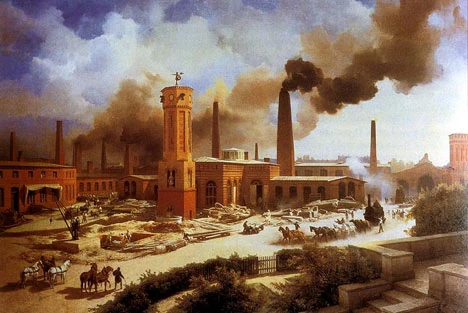The word Đeman grabs attention because it carries mystery, cultural depth, and emotional symbolism all at once. People encounter it in stories, rituals, or online discussions and immediately feel that it represents something more than just a term. Its meaning shifts depending on who uses it and in what context. This fluid nature is exactly why it sparks curiosity worldwide. Before you know it, you’re pulled into an entire world of tradition, folklore, and identity.
Đeman represents a culturally rich concept tied to ancestral traditions, symbolism, and storytelling. People explore Đeman to understand deeper meanings, heritage, and emotional connections across generations.
What Exactly Does “Đeman” Mean? A Simple Breakdown
“Đeman” is a fascinating word because its meaning shifts depending on how and where it’s used. In most cases, it’s seen as a phonetic or regional variation of the word “demand,” referring to a request, need, or desire for something. In some communities, it also points to anything that is highly popular or in strong need within a market.
In online conversations and modern slang, “Đeman” can describe a trend, a viral topic, or a rapidly growing public interest. The term carries a dynamic quality where context strongly shapes its exact meaning. This makes “Đeman” not only a literal expression but also a culturally relevant one. Understanding how this word is used helps you better analyze market behavior, audience interest, and trending patterns.
The Historical Roots of Đeman and Where the Term Comes From
The word Đeman goes back to very old Slavic cultures, long before written history shaped their myths. Ancient Slavs believed that nature was alive with spirits, so creatures like Đeman came from a worldview where forests and mountains had personalities.

When Christianity spread across the Balkans, these older spirits were reinterpreted through a religious lens and seen as darker entities. Over time, storytellers blended pagan beliefs with Christian ideas, giving Đeman a more shadowed and powerful identity. This mix of cultures made the term rich, layered, and flexible. It became a symbol shaped by centuries of belief, fear, and imagination.
Đeman in Folklore, Storytelling, and Oral Traditions
In stories passed down by elders, Đeman appears as a shape-shifter, guide, guardian, or tester of human courage. It often lives in forests, caves, abandoned places, or regions that humans fear to enter. Some tales portray it as a boundary walker that moves between worlds, carrying messages or protecting hidden truths.
Others paint it as a tricky spirit that challenges heroes to reveal their strength. Its role depends on who is telling the story and what lesson they want to highlight. Because of this, Đeman became a central symbol in Balkan storytelling, rich with mystery and meaning.
Symbolic Meaning – What Đeman Represents Emotionally and Spiritually
Emotionally, Đeman represents the inner fears and hidden shadows that live within human consciousness. It stands for the things people avoid confronting, like old wounds, buried emotions, and the unknown parts of the self. Spiritually, it symbolizes transformation and the ability to face uncomfortable truths.
Its shape-shifting nature reflects the changing identity of humans as they grow and struggle. It also represents nature’s wild power, the part of the world that cannot be controlled or explained. Through this symbolism, Đeman becomes less of a creature and more of a mirror that reveals what humans fear or need to learn.
How Different Cultures Interpret Đeman
- Many Southeast Asian communities view Đeman as a bridge between the living and their ancestors, symbolizing respect, memory, and spiritual connection.
- In folklore-rich regions, Đeman often represents a guardian figure, blending myth with tradition to teach moral lessons and preserve heritage.
- Some modern cultures reinterpret Đeman as an emotional metaphor for inner struggles, healing, and personal transformation.
- Artistic communities treat Đeman as a symbol of identity, using it to express cultural pride through music, storytelling, and visual art.
- In global discussions, Đeman is seen as a cultural thread that shows how traditions evolve while still protecting historical meaning.
Đeman in Modern Times – How the Meaning Has Evolved
In modern times, the meaning of “Đeman” has expanded far beyond its earlier, demand-related interpretation. Today, the term often reflects the fast pace of digital culture, where trends shift quickly and public interest spikes overnight. People use “Đeman” to describe anything that suddenly becomes popular, widely searched, or highly talked about online. It has also taken on a more flexible meaning, representing not just need, but excitement, curiosity, and collective attention.

As social media continues to shape language, “Đeman” has grown into a symbol of what captures the world’s focus at any given moment. Its evolution shows how language adapts to modern behavior, technology, and global communication. Understanding this shift helps explain why the term feels more relevant than ever.
Đeman and Personal Struggles – A Symbol of Inner Battles
Many people use Đeman metaphorically to describe their inner conflicts or emotional journeys. It becomes a way to talk about fear, courage, resilience, or healing without directly naming them. Through this lens, Đeman represents the human battle between who we were and who we are becoming. People connect with this symbolism because it feels raw and honest. It gives a traditional word a modern emotional twist.
Psychological Interpretation – Why Đeman Resonates with the Mind
From a psychological perspective, “Đeman” resonates because it taps directly into how the human mind responds to desire, curiosity, and social influence. The word naturally evokes a sense of wanting or seeking, which triggers our brain’s reward pathways. In modern contexts, people associate “Đeman” with trending topics and rising interest, making it feel mentally stimulating and socially relevant.
When something is labeled as “Đeman,” it creates a subtle pressure to pay attention, driven by the fear of missing out. This emotional pull strengthens its impact and keeps it anchored in everyday language. The term also mirrors our instinct to follow patterns of popularity and collective behavior. Ultimately, “Đeman” sticks in the mind because it blends personal desire with social validation, creating a meaning that feels both emotional and universal.
Đeman in Popular Media and Creative Expression
Writers, filmmakers, and artists use Đeman to add depth, cultural richness, or mystery to their work. It appears in poems, novels, short films, and symbolic artwork. The emotional weight of the word gives creators a powerful tool to express themes like heritage or inner struggle. As global media becomes more diverse, Đeman continues to show up in new creative spaces. This helps keep the term relevant and visible.
Common Misconceptions About the Word “Đeman”
Many people misunderstand the word “Đeman,” often assuming it has only one fixed meaning tied strictly to “demand.” A common misconception is that it’s a misspelling, when in reality its usage varies across regions, cultures, and online communities. Some believe it refers only to market needs, but the term is now used in broader contexts like trends, popularity, and social attention.
Another misconception is that it carries a negative tone, while in many cases it simply reflects curiosity or rising interest. Others think it’s just internet slang, yet the word has deeper linguistic roots that go beyond digital culture. These misunderstandings usually stem from limited context or exposure. Clearing them up helps reveal how flexible and meaningful the term actually is.
Why Đeman Still Matters Today
- Đeman matters today because it keeps cultural identity alive, reminding people where they come from in a fast-changing, digital world.
- It helps younger generations reconnect with their roots, giving them a deeper understanding of family traditions and ancestral values.
- Many people view Đeman as a symbol of emotional grounding, offering comfort and meaning during personal challenges.
- Modern artists, writers, and creators use Đeman to inspire new forms of storytelling that blend tradition with contemporary expression.
- Global interest in Đeman is rising because it highlights the importance of heritage, community, and shared human experiences across cultures.
How Artists and Writers Reimagine Đeman Today
Creative minds love exploring Đeman because it has so much symbolic potential. Some portray it as a spiritual guide, while others use it to express emotional transformation. Through poetry, visual art, and storytelling, they reshape the term for modern audiences. These fresh interpretations keep Đeman alive and constantly evolving. Art gives it new life without erasing its roots.

Future of Đeman – Where the Word Is Heading Next
As global culture becomes more interconnected, Đeman will likely appear in new fields such as digital storytelling, cultural studies, and modern spirituality. It may evolve into a larger symbol of identity or emotional growth. With more people exploring heritage and tradition, terms like Đeman gain new relevance. Its future looks promising, filled with creative and cultural expansion.
FAQ About Đeman
1. What does “Đeman” generally mean?
“Đeman” usually refers to desire, need, or rising interest. Its meaning changes with context, especially in modern digital culture where popularity and trends shape its usage.
2. Is “Đeman” the same as “demand”?
Not exactly. While it’s related to “demand,” “Đeman” is broader. It can describe trending topics, high interest, or anything gaining strong attention online or socially.
3. Why is “Đeman” popular in modern language?
People use “Đeman” because it captures rapid shifts in online attention. It reflects what’s trending, highly searched, or actively desired in digital spaces.
4. Does “Đeman” have a negative meaning?
No. It isn’t negative by default. Depending on context, it can represent curiosity, excitement, growing interest, or collective attention rather than pressure or scarcity.
5. How is “Đeman” useful in content or marketing?
Marketers use “Đeman” to track audience interest, identify trending topics, and understand what users want. It signals rising demand, helping shape timely and relevant content.
Conclusion
Đeman isn’t just a word. It’s heritage, symbolism, emotion, and human experience wrapped into one. Its layered meaning allows people from different backgrounds to relate to it in their own way. Whether you approach it through culture, psychology, storytelling, or personal reflection, Đeman has something to offer. That timelessness is exactly why the term continues to inspire curiosity and conversation today.
Read must
















